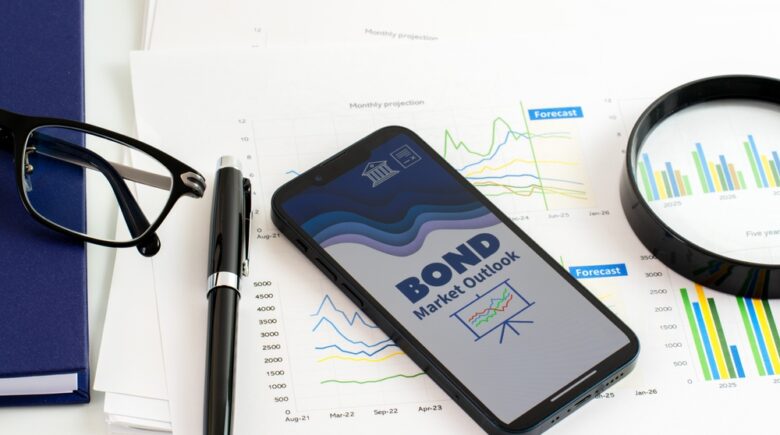After years of disappointing returns and fierce competition from high-flying tech stocks, bonds are making a surprising comeback. The fixed income market, once considered the boring cousin of equities, now attracts serious attention from millennial investors who previously dismissed it. Rising yields, economic uncertainty, and a maturing investment landscape have transformed bonds from afterthoughts into strategic portfolio anchors. As we look toward 2026, the question isn’t whether bonds deserve a place in your portfolio—it’s how much space they should occupy.
Bonds Stage a Comeback After Years in Shadow
The 2010s weren’t kind to bond investors. Rock-bottom interest rates made fixed income securities almost pointless for anyone seeking meaningful returns. Meanwhile, tech stocks soared to unprecedented heights. Why settle for 2% annual returns when you could potentially double your money in Tesla or Amazon? This mentality pushed an entire generation away from traditional fixed income investing.
The landscape has shifted dramatically since 2022. The Federal Reserve’s aggressive rate hikes transformed bonds from yield-starved instruments into competitive investment vehicles. Treasury bonds now offer returns that haven’t been seen in over 15 years. Corporate bonds provide even higher yields for those willing to accept moderate risk. This fundamental change has forced investors to reconsider their portfolios.
Digital platforms have democratized bond investing in ways previous generations never experienced. Fintech companies like Public and Robinhood now offer fractional bond purchases. You don’t need $10,000 to buy a Treasury bond anymore. These platforms have removed traditional barriers that kept younger investors out of fixed income markets. The result? A surge of millennial interest in what was once considered an exclusively boomer investment category.
The Digital Transformation of Bond Markets
Technology has revolutionized how we access fixed income investments. Traditional bond purchases required working with brokers or navigating complex Treasury Direct interfaces. Modern apps have streamlined this process entirely. You can now build a diversified bond ladder from your smartphone during your lunch break.
Robo-advisors have incorporated sophisticated bond strategies into their algorithms. Betterment and Wealthfront automatically adjust your fixed income allocation based on your age and risk tolerance. These platforms rebalance portfolios without requiring you to understand the intricacies of duration or credit ratings. This automation appeals to millennials who want professional-grade investing without the professional fees.
Blockchain technology promises to further transform bond markets. Tokenized bonds could offer 24/7 trading and instant settlement. While still emerging, this technology could eliminate many inefficiencies in traditional fixed income markets. Early adopters are already exploring these digital securities, though regulatory frameworks remain under development.
Why Fixed Income Finally Makes Sense Again
Economic uncertainty has become the new normal. Geopolitical tensions, inflation concerns, and market volatility have investors seeking stability. Bonds provide exactly that—predictable income streams and principal protection. When stock markets swing wildly, bond portfolios remain relatively calm. This stability has newfound appeal for millennials who’ve experienced multiple market crashes in their investing lifetimes.
The math simply works better now. A 5% yield on investment-grade corporate bonds beats many dividend stocks. When you factor in lower volatility, the risk-adjusted returns become even more attractive. Millennials approaching their 40s are discovering what their parents knew all along: bonds play a crucial role in wealth preservation. The difference is that today’s yields actually make that preservation worthwhile.
Diversification has moved from buzzword to necessity. The 60/40 stock-bond portfolio, once declared dead, is experiencing a renaissance. Modern portfolio theory still holds true—uncorrelated assets reduce overall risk. Bonds typically move inversely to stocks during market stress. This negative correlation provides the portfolio cushion that pure equity investors lack. As millennials accumulate more wealth, they’re increasingly unwilling to risk it all on equities.
Regulatory Changes Supporting Bond Investors
Consumer protection in fixed income markets has strengthened significantly. The SEC has implemented stricter disclosure requirements for bond issuers. Investors now receive clearer information about risks, fees, and terms. These regulatory improvements have increased transparency and reduced the information asymmetry that once plagued retail bond investors.
Fintech regulation has evolved to protect digital bond investors. The Financial Industry Regulatory Authority (FINRA) now oversees many online platforms offering fixed income securities. This oversight ensures that digital-first companies maintain the same standards as traditional brokers. Investors can confidently use apps knowing regulatory safeguards protect their interests.
Tax-advantaged bond options have expanded through legislative changes. Municipal bonds remain tax-free at the federal level, and many states exempt their own bonds from state taxes. Treasury Inflation-Protected Securities (TIPS) offer protection against rising prices. These tax-efficient options help investors keep more of their returns, making bonds even more competitive with taxable equity investments.
Building Your 2026 Bond Strategy
Starting a bond portfolio doesn’t require complex strategies. Treasury bonds offer the safest entry point for beginners. You can purchase them directly through TreasuryDirect.gov or through most brokerage platforms. Consider building a bond ladder—purchasing bonds with staggered maturity dates. This strategy provides regular income while maintaining flexibility.
Corporate bonds offer higher yields but require more research. Investment-grade corporate bonds from established companies balance risk and return effectively. Platforms like Fidelity and Vanguard provide extensive bond screening tools. You can filter by credit rating, yield, maturity, and sector. This accessibility empowers individual investors to build sophisticated portfolios.
Consider your overall financial picture when allocating to bonds. Financial advisors typically recommend increasing bond allocation as you age. A common rule suggests holding a bond percentage equal to your age. However, longer life expectancies and delayed retirement may warrant adjusting this formula. Your personal risk tolerance and financial goals should ultimately guide your allocation decisions.
The bond market’s resurgence isn’t just a temporary trend—it reflects fundamental shifts in economic conditions, technology, and investor demographics. Millennials who once dismissed fixed income are now recognizing its value in building resilient portfolios. As we move toward 2026, bonds offer competitive yields, portfolio stability, and accessible entry points through digital platforms. Whether bonds dominate 2026 remains uncertain, but their renewed relevance is undeniable. Smart investors are already positioning themselves to benefit from this fixed income renaissance, balancing growth aspirations with the wisdom of diversification.
References
- NerdWallet – “How to Invest in Bonds: A Beginner’s Guide” – https://www.nerdwallet.com/article/investing/how-to-buy-bonds
- Yahoo Finance – “Bond Market Analysis and Treasury Yields” – https://finance.yahoo.com/bonds
- Financial Industry Regulatory Authority (FINRA) – “Bond Investing” – https://www.finra.org/investors/learn-to-invest/types-investments/bonds

